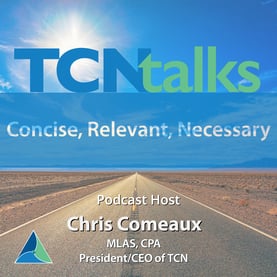“Quality is never an accident; it is always the result of high intention, sincere effort, intelligent direction, and skillful execution; it represents the wise choice of many alternatives.” William A Foster
If you have worked in healthcare for any length of time you have likely heard words like “fee-for-service,” “value-based care,” “pay-for-performance,” “outcome driven” but what do these words mean and how do we achieve them? The answer can be found in creating a healthcare ecosystem which honors the expertise of each care provider and care setting while placing the patient in the center of their care. Furthermore, it requires good care management principles, aligning the healthcare ecosystem and furthering care collaboration across the healthcare continuum.
According to the National Library of Medicine, “The continuum of care is a concept involving an integrated system of care that guides and tracks a patient over time through a comprehensive array of health services spanning all levels of intensity of care.” This implies integration of acute and pre, post-acute care and services where broadly speaking, pre, post-acute care and services can be defined as all treatments and care provided before or after an acute inpatient event. Of importance the quality of post-acute care has a lot to do with prevention of re-admission and ensuring good outcomes for those we care for creating an effective value-based care strategy.
For those caring for the serious illness population who are at high risk of hospitalization and/or mortality we have been doing this for years and now we are being placed in a unique position full of creative tension forcing the healthcare ecosystem to identify ways which it can support the transition from fee-for-service payment models where reimbursement is based on volume of care, services and episodes to value-based care payment models where reimbursement is based on outcomes and quality. It is within this framework where post-acute care providers experienced in serious illness management shine and where new doors are being opened every day.
“Truly affordable but high-quality health care tools and services are the only means by which quality health care can be provided to all.” Muhannad Yunus
At TCN, we are proud to serve alongside our members who provide a wide range of post-acute care and services from primary care to home health to palliative care and hospice services. As care providers, we find ourselves at the crossroad of transitioning from vendor-like referral relationships which has supported the more traditional fee-for-service payment model to collaborative relationships and partnerships maximizing the potential for care coordination, the secret ingredient, to changing the trajectory of not only the cost of care but achievement of the Quadruple Aim. Historically speaking, as a provider, we have had to find a strategy to identify as a preferred provider but now we need to be thinking more strategically about partnerships in terms of preferred collaborators and favored partners where we can align our care, services, and expertise with other care providers in an effort to create a continuum of care designed to be successful in the world of value-based care and outcome driven payment models.
As we continue serving as pioneers in our field here are things to consider:
- How to obtain reliable and timely data on cost, quality, and clinical decision support
- How much investment is needed in health management infrastructure (e.g., IT, clinical teams)
- Creation of a roadmap to transitioning from current reality to value-based care and what is the timeline
- Identify target patient population and understand how current competencies complement this population or what competencies need to be developed or refined
- Who will be the right partner(s) and/or preferred collaborators and what strategy is needed for execution of that relationship
Amy Ford
Vice President Of Serious Illness
Clinical Operations & Population Health


Reference:
Creating the continuum of care - PubMed (nih.gov)
Teleios University (TU)
Discover More
Register Today!
We invite you to listen
to our TCNtalks Podcast

Concise, relevant, need-to-know to help you
in your role as a serious illness professional.

An organizational model that allows nonprofit hospices (Members) to leverage best practices, achieve economies of scale and collaborate in ways that better prepare each agency to participate in emerging alternative payment models and advance their charitable missions.






